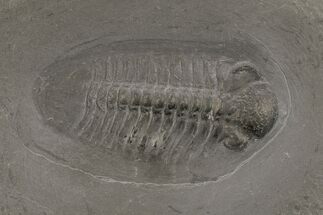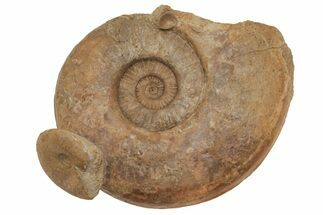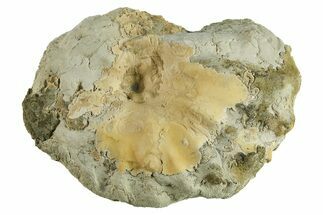This Specimen has been sold.
2.4" Cretaceous Ammonite (Paravascoceras) Fossil - Nigeria
This is a beautiful, 2.4" wide ammonite fossil of the species Paravascoceras carteri, collected from Gombe in north-eastern Nigeria. It comes from Lower Turonian-aged deposits, making it approximately 93 million years old. The rock has been prepped away from most of this rare ammonite specimen, with a section of rock left to act as a display base.
About Ammonites
Ammonites were ancient marine cephalopods, similar to today's squids and octopuses, but with a defining feature: their distinctive, tightly coiled spiral shells. These shells, resembling those of modern nautiluses, served as both a protective home and a buoyancy aid, allowing ammonites to navigate the prehistoric seas with ease. First emerging around 240 million years ago in the Triassic Period, ammonites thrived for over 175 million years, adapting through numerous forms and sizes. As predatory creatures, they likely fed on smaller marine organisms, using their tentacles to capture prey. However, their long reign came to an end 65 million years ago at the close of the Cretaceous, coinciding with the mass extinction event that also eliminated the dinosaurs.
Ammonites were ancient marine cephalopods, similar to today's squids and octopuses, but with a defining feature: their distinctive, tightly coiled spiral shells. These shells, resembling those of modern nautiluses, served as both a protective home and a buoyancy aid, allowing ammonites to navigate the prehistoric seas with ease. First emerging around 240 million years ago in the Triassic Period, ammonites thrived for over 175 million years, adapting through numerous forms and sizes. As predatory creatures, they likely fed on smaller marine organisms, using their tentacles to capture prey. However, their long reign came to an end 65 million years ago at the close of the Cretaceous, coinciding with the mass extinction event that also eliminated the dinosaurs.
SPECIES
Paravascoceras carteri
LOCATION
Gombe, Nigeria
SIZE
2.4" wide
CATEGORY
ITEM
#262708
We guarantee the authenticity of all of our specimens.
 Reviews
Reviews











